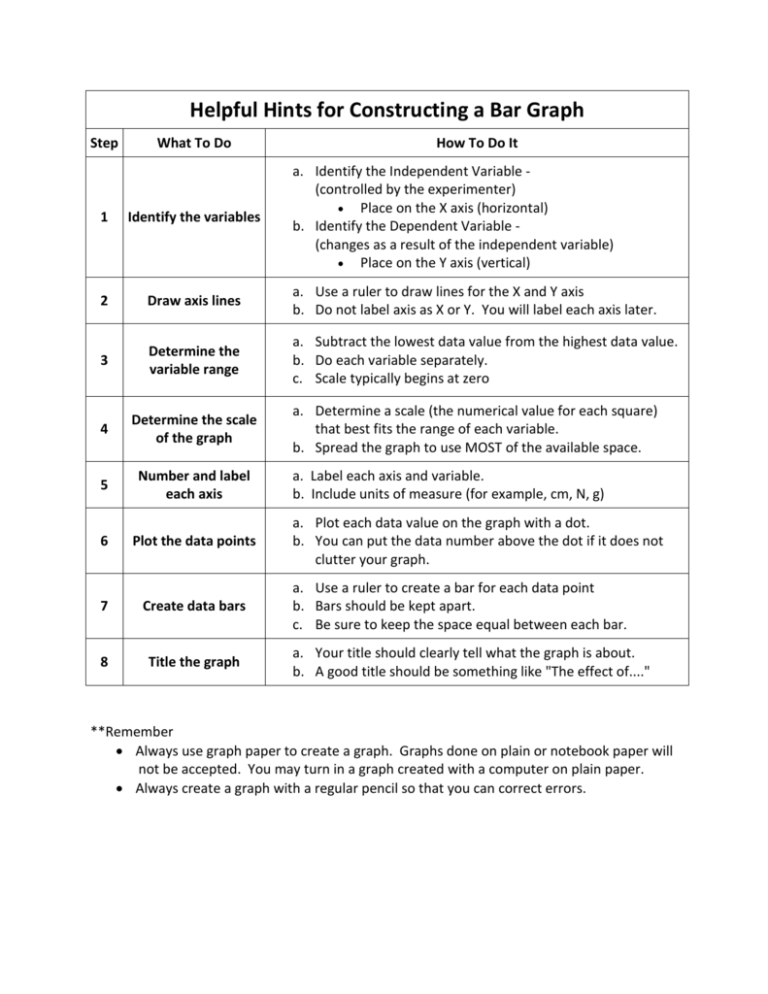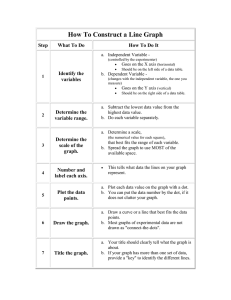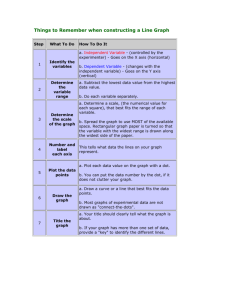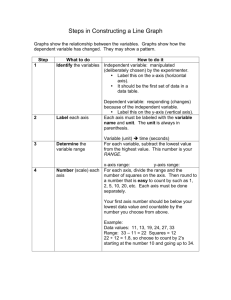How To Construct a Bar Graph
advertisement

Helpful Hints for Constructing a Bar Graph Step What To Do How To Do It a. Identify the Independent Variable (controlled by the experimenter) Place on the X axis (horizontal) b. Identify the Dependent Variable (changes as a result of the independent variable) Place on the Y axis (vertical) 1 Identify the variables 2 Draw axis lines a. Use a ruler to draw lines for the X and Y axis b. Do not label axis as X or Y. You will label each axis later. 3 Determine the variable range a. Subtract the lowest data value from the highest data value. b. Do each variable separately. c. Scale typically begins at zero 4 Determine the scale of the graph 5 Number and label each axis 6 Plot the data points 7 Create data bars 8 Title the graph a. Determine a scale (the numerical value for each square) that best fits the range of each variable. b. Spread the graph to use MOST of the available space. a. Label each axis and variable. b. Include units of measure (for example, cm, N, g) a. Plot each data value on the graph with a dot. b. You can put the data number above the dot if it does not clutter your graph. a. Use a ruler to create a bar for each data point b. Bars should be kept apart. c. Be sure to keep the space equal between each bar. a. Your title should clearly tell what the graph is about. b. A good title should be something like "The effect of...." **Remember Always use graph paper to create a graph. Graphs done on plain or notebook paper will not be accepted. You may turn in a graph created with a computer on plain paper. Always create a graph with a regular pencil so that you can correct errors.











